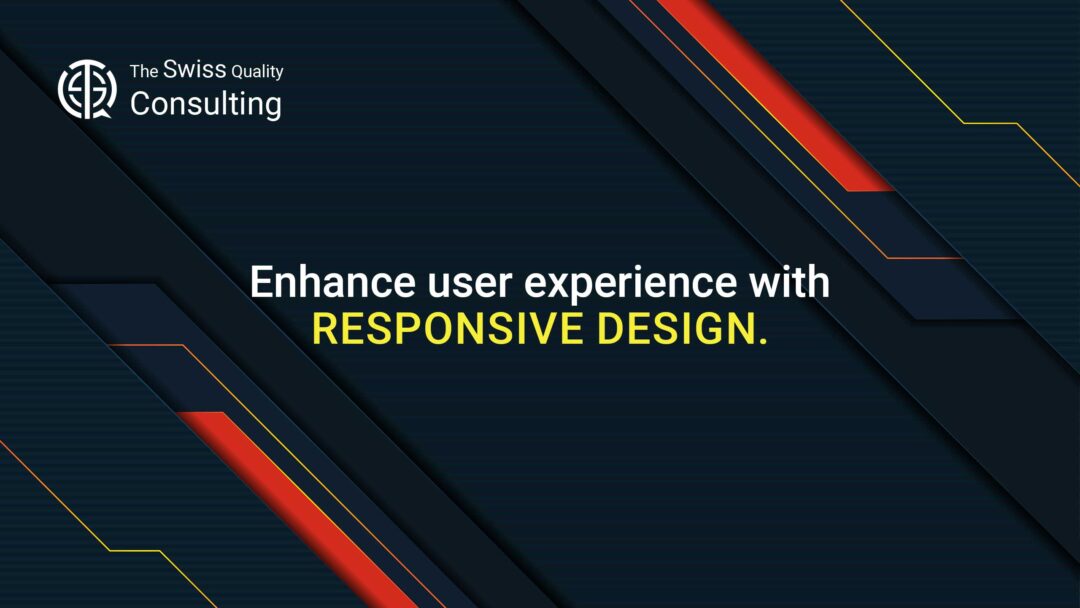Creating Seamless User Experiences Through Responsive Design
In today’s digital age, user experience (UX) is a critical factor that can make or break a business. Whether you’re a business executive, mid-level manager, or entrepreneur, the ability to provide a seamless and engaging digital experience to your audience is paramount. Responsive design is a key strategy in achieving this goal. In this article, we will explore the significance of responsive design and how it can enhance the user experience.
The Importance of User Experience
User experience (UX) is not merely a collection of design principles and aesthetic choices; it is the overarching experience that individuals have when interacting with a website, application, or product. It encompasses the seamlessness, intuitiveness, and overall satisfaction derived from the interaction. A positive UX goes beyond mere functionality; it delves into the emotional connection and lasting impression that a product leaves on its users.
A positive UX is not a fleeting experience; it is a testament to the deep understanding of user needs and behaviors. It is about creating interfaces that are intuitive, accessible, and responsive to the user’s goals and intentions. By prioritizing user experience, businesses can foster interactions that are not only functional but also delightful and engaging.
The benefits of a positive UX extend far beyond individual satisfaction; they directly impact business growth and sustainability. A seamless user experience encourages users to stay engaged, explore new features, and return for repeat interactions. This increased engagement translates into increased revenue, customer loyalty, and brand advocacy.
In today’s competitive digital landscape, a positive UX is not a competitive advantage; it is a table stakes requirement. Businesses that fail to prioritize user experience risk losing valuable customers to competitors who have invested in creating intuitive and engaging interfaces. By embracing UX as a core pillar of their strategy, businesses can attract and retain top talent, drive sales, and achieve sustainable success.
Cultivating a positive UX is not a one-time endeavor; it is an ongoing commitment to understanding and anticipating user needs. Businesses must continuously gather feedback, conduct user testing, and adapt their designs to evolving trends and technologies. This iterative approach ensures that the user experience remains relevant, engaging, and competitive.
In the digital age, user experience has emerged as a powerful force that shapes not only individual interactions but also business growth and success. By prioritizing UX, businesses can create products that are not only functional but also delightful, fostering long-term engagement, customer loyalty, and ultimately, sustainable market leadership.
Responsive Design: A Solution for a Multi-Device World
In today’s digital landscape, users access websites and applications on a multitude of devices, including smartphones, tablets, laptops, and desktop computers. Responsive design is an approach that ensures a consistent and optimal user experience across all these devices.
Key Principles of Responsive Design
Responsive design is guided by several key principles, including fluid grids, flexible images, and media queries. These principles allow a website or application to adapt to different screen sizes and resolutions, ensuring that content is displayed in the most user-friendly way possible.
Benefits of Responsive Design
The benefits of responsive design are numerous. Firstly, it eliminates the need to create separate versions of a website or app for different devices, saving time and resources. Secondly, it improves search engine rankings, as search engines like Google prioritize mobile-friendly websites. Lastly, it enhances user engagement and satisfaction, leading to higher conversion rates and customer retention.
The Role of Technology in Responsive Design
Technology, particularly Generative Artificial Intelligence (AI), has played a significant role in advancing responsive design. AI-powered tools can analyze user behavior and device preferences to optimize the user experience in real-time.
Real-Time Optimization
Generative AI can analyze user data, including the device being used, location, and browsing habits, to make real-time adjustments to a website or application. For example, it can dynamically resize images or reposition content to ensure optimal visibility and functionality.
Personalization and User Insights
Generative AI can also personalize the user experience based on individual preferences and behavior. By understanding user preferences, AI can recommend content, products, or services that are more likely to resonate with the user.
Maximizing User Experience Through Responsive Design
Responsive design is not just a trend; it’s a necessity in today’s digital landscape. Here are some ways in which responsive design can maximize user experience:
Seamless Cross-Device Experience
With responsive design, users can seamlessly transition from one device to another without losing the context or functionality of the website or application. This ensures a consistent and enjoyable experience.
Faster Load Times
Responsive design often leads to faster load times, as it eliminates the need to load large, high-resolution images on smaller devices. This is crucial for retaining user engagement and reducing bounce rates.
Conclusion
In conclusion, responsive design is a fundamental strategy for enhancing user experience in today’s digital world. It aligns with the principles of accessibility, usability, and adaptability, ensuring that your audience has a positive and consistent interaction with your digital assets. With the assistance of Generative AI, responsive design becomes even more powerful, enabling real-time optimization and personalization. By prioritizing responsive design, businesses can elevate their digital presence and drive user engagement and satisfaction.









